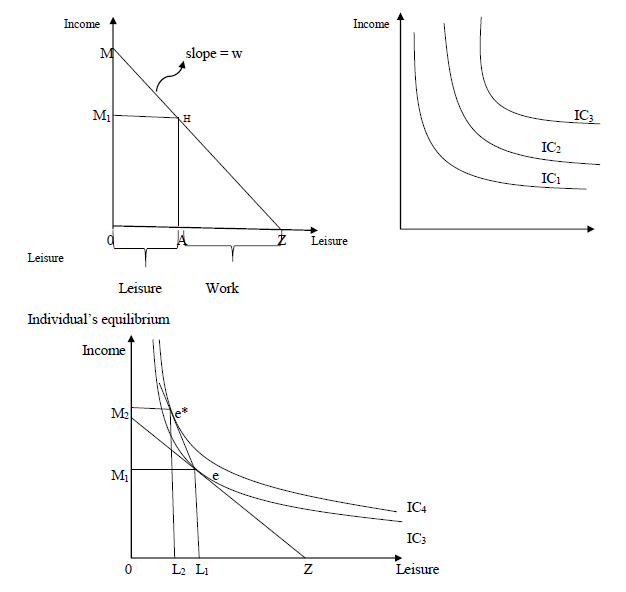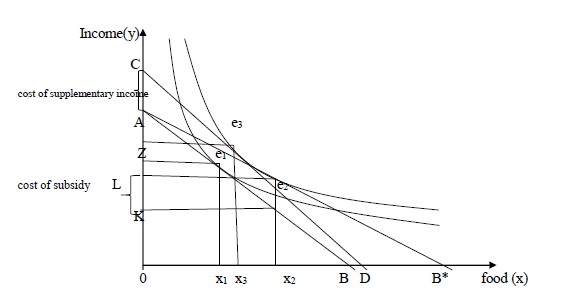1. The leisure-income trade off and need for overtime rates higher than the normal wage rates.First derive the income leisure curve of an individual consumer. This curve shows the different combinations of income, earned by working and leisure time. Assume that the maximum time available for both leisure and work is OZ, the individual can either use OZ hours for leisure in this case earns Zero income, or he can chose to work all the OZ hours, and therefore earn the maximum money income OM given wage rate w or alternatively he can work part of the AZ hours and leisure part OA in which case he would earn OM. The MZ is the income-leisure curve, which shows how much of his leisure time an individual must give up if he wants to earn a certain income. The slope of this curve equals to the market wage rate.
Constructing an indifference map of the individual, which shows the ranking of his preferences between income and leisure, Each indifference curve shows various combinations of income and leisure the give the consumer equal level of satisfaction (Utility).
The individual’s equilibrium is determined by the point of tangency of his income-leisure line and the highest possible trade off line (point e), given the wage rate w the individual maximizes his utility by working L
1Z hours, earning income OM
1 and using the remaining timeOL
1 for leisure.
 2. Evaluation of alternative government policies using indifference curves analysis
2. Evaluation of alternative government policies using indifference curves analysisAssume that the government considers either the adoption of a food subsidization policy for pensioners or granting a supplementary income for them. The question is which of this measure will cost less to the government and what are the effects of these policies to the demand patterns of the pensioners? Assume there is a single pensioner and two commodities (x food and Y Money income).

The initial equilibrium of the pensioner is at point e
1 where his budget line AB is tangent to indifference curve I
1 he consumes OX
1 units of food, paying ZA of his income, and having OZ Income left over to spend on other commodities. The goal of the government is to make it possible for pensioners to move to the higher level of welfare (satisfaction) denoted by the indifference curve I
2
Wilfykil answered the question on
March 20, 2019 at 08:57